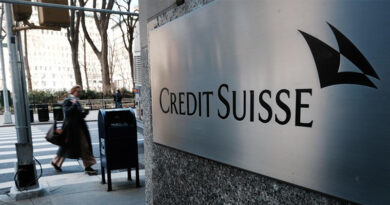The disclosure of the owner of the money coming from Mauritius will be necessary, rules can come before the budget
There is a plan to rein in black money coming from Mauritius in India. The government can make it necessary to give complete information about the money coming from there. Who owns the money, his name, address, passport number, etc. have to be told. The Central Board of Direct Taxes (CBDT), the largest body of income tax and corporate tax matters, may soon issue its circular. According to sources, this circular may be released even before the budget.
The real owner of the money has to be given
Who is the beneficiary owner of the money will also have to be told. Beneficial ownership means a person who holds at least 25% stake in a company or fund. Recently, the US has enacted anti-corruption legislation to curb shell companies. In that also, it has been made necessary for companies to tell about beneficiary ownership. After this, India has taken this decision.
Till now only 3 information had to be given on the investment of Mauritius.
Till now, if you invest in India through Mauritius, then you only had to give the information about the company director, the address of the company and when the company was formed. But from this information, it was not known who the rightful owner of the money is. Because the director may or may not be the owner of the company. Therefore 25% of the ownership will know the source of the money.
In India, if you send money anywhere from a bank, then the original route is known. Where the money comes from, where everything goes is known. But Mauritius does not have this system.
Money came from Mauritius in the company of Chanda Kochhar’s husband
Deepak Kochhar, husband of former ICICI Bank CEO Chanda Kochhar, is involved in the case of a Mauritius fund. The Newup Renewables to whom Chanda went to Kochhar’s chair in connection with the loan was that of Deepak Kochhar. An investment of 320 crores in 5 times came from Mauritius in this company. The money came from the Mauritius company First Land Holding and DH Renewable. The Reserve Bank gave this information in 2016, but it could not catch the source of this fund.
IL&FS case also related to mask company
In the IL&FS case, the Enforcement Directorate (ED) seized shares worth Rs 452 crore last week. These shares are owned by S Coal Company Singapore. It is a mask company owned by British citizen Jaymin Vyas. The ED has taken this action under the money laundering law.
The government was made a task force in February 2017
The task force was created by the Prime Minister’s Office in February 2017 to curb mask companies in India. Under the US Securities Act, mask companies are defined according to the size and assets of the business, but this is not the case in India.
The mask company’s business is only on paper
Undercover companies do not actually do any business. Money is simply transferred from one company to another. In August 2017, SEBI directed the stock exchanges to take action against 331 suspected mask companies. In September the same year, the Ministry of Company Affairs had canceled the registration of 2 lakh 9 thousand 32 companies.
Black money sends out on fake bills, same comes back as FDI
Money coming from Mauritius in India is tax-free, because there is a tax treaty between India and Mauritius. Now India wants to attack it. Traders in India send money out in the name of fake import-export, then bring it back to the country in the form of FDI through Mauritius. This is called round-tripping.
Mauritius’ GDP at number 123, still ahead in FDI
Mauritius is second in the forthcoming FDI in India. FDI from Singapore was $14.67 billion in 2019-20 and $8.24 billion from Mauritius. That too when its GDP is ranked 123 in the world. Mauritius had a GDP of $1,439 million in 2019. Experts say that there is not much money in Mauritius. The country itself is dependent on South Africa. In such a situation, how can it invest in India?
Demonetization was done to control black money
In November 2016, the Modi government had discontinued 500 and 1000 rupee notes. Its purpose was stated that these notes running as black money will be out of the system. However, black money has come back into the system after that.

